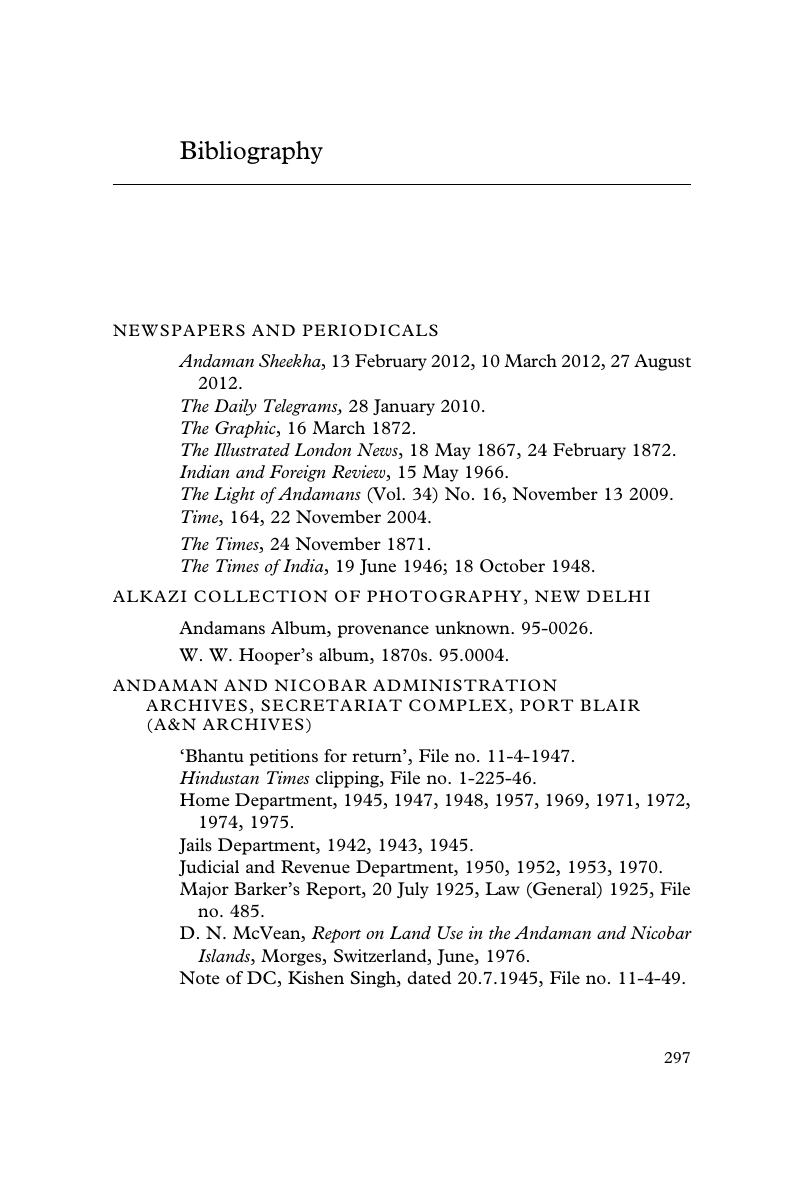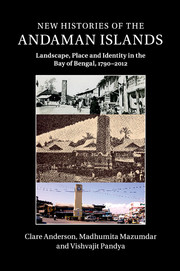Bibliography
Published online by Cambridge University Press: 05 February 2016
Summary

- Type
- Chapter
- Information
- New Histories of the Andaman IslandsLandscape, Place and Identity in the Bay of Bengal, 1790–2012, pp. 297 - 312Publisher: Cambridge University PressPrint publication year: 2016

